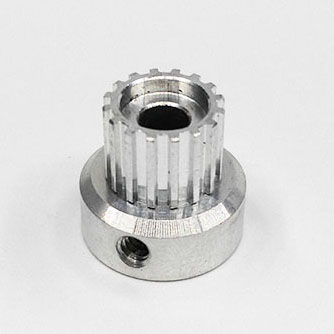In addition to the above-mentioned reasons, aluminum parts deform during processing. In actual operation, the operation method is also very important.
For parts with large
Machining allowances, in order to have better heat dissipation conditions during the machining process and avoid heat concentration, symmetrical machining should be used during machining. If there is a 90mm thick sheet that needs to be processed to 60mm, if one side is milled and the other side is milled immediately, and the final size is processed once, the flatness will reach 5mm; if repeated feed symmetrical processing is used, each side is processed twice The final size can guarantee a flatness of 0.3mm. If there are multiple cavities on the plate part, it is not advisable to use a cavity-by-cavity sequential processing method during processing, as this will easily cause uneven forces and deformation of the parts. Multi-layer processing is adopted, and each layer is processed to all cavities at the same time as much as possible, and then the next layer is processed to make the parts evenly stressed and reduce deformation.

Reduce cutting force and cutting heat by changing the cutting amount. Among the three elements of cutting amount, the amount of back-cutting has a great influence on cutting force. If the machining allowance is too large, the cutting force of a pass is too large, which will not only deform the parts, but also affect the rigidity of the machine tool spindle and reduce the durability of the tool. If you reduce the amount of knives back, the production efficiency will be greatly reduced. However, high-speed milling is used in
CNC Machining, which can overcome this problem. While reducing the amount of back-grabbing, as long as the feed is increased correspondingly and the speed of the machine tool is increased, the cutting force can be reduced while ensuring the processing efficiency.
Also pay attention to the order of the knife. Rough machining emphasizes the improvement of machining efficiency and the pursuit of removal rate per unit time. Generally, up-cut milling can be used. That is, the excess material on the surface of the blank is removed at the fastest speed and the shortest time, and the geometric contour required for finishing is basically formed. The emphasis of finishing is high precision and high quality, and down milling should be used. Because the cutting thickness of the cutter teeth gradually decreases from the maximum to zero during down milling, the degree of work hardening is greatly reduced, and at the same time the degree of deformation of the parts is reduced.
Thin-walled workpieces are deformed due to clamping during processing, and even finishing is unavoidable. In order to minimize the deformation of the workpiece, the pressing piece can be loosened before the final size of the finishing process is reached, so that the workpiece can be restored to its original shape freely, and then slightly compressed, subject to the rigid clamping of the workpiece (completely By hand), the ideal processing effect can be obtained in this way. In short, the point of action of the clamping force is best on the supporting surface, and the clamping force should act in the direction of good rigidity of the workpiece. Under the premise of ensuring that the workpiece does not loosen, the smaller the clamping force, the better.
When
Machining Parts with cavities, try not to allow the milling cutter to plunge directly into the part like a drill bit, resulting in insufficient chip space for the milling cutter, unsmooth chip removal, and overheating, expansion, and tool collapse. Unfavorable phenomena such as broken knife. First, drill the hole with a drill of the same size as the milling cutter or one size larger, and then mill it with the milling cutter. Alternatively, the CAM software can be used to produce the spiral cutting program.



